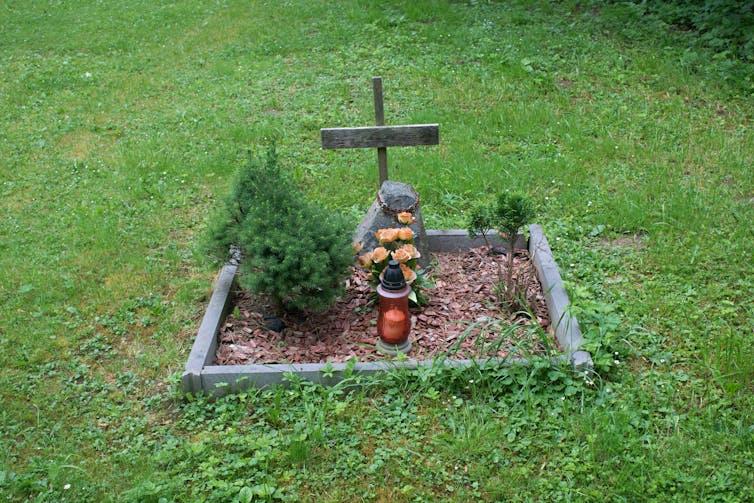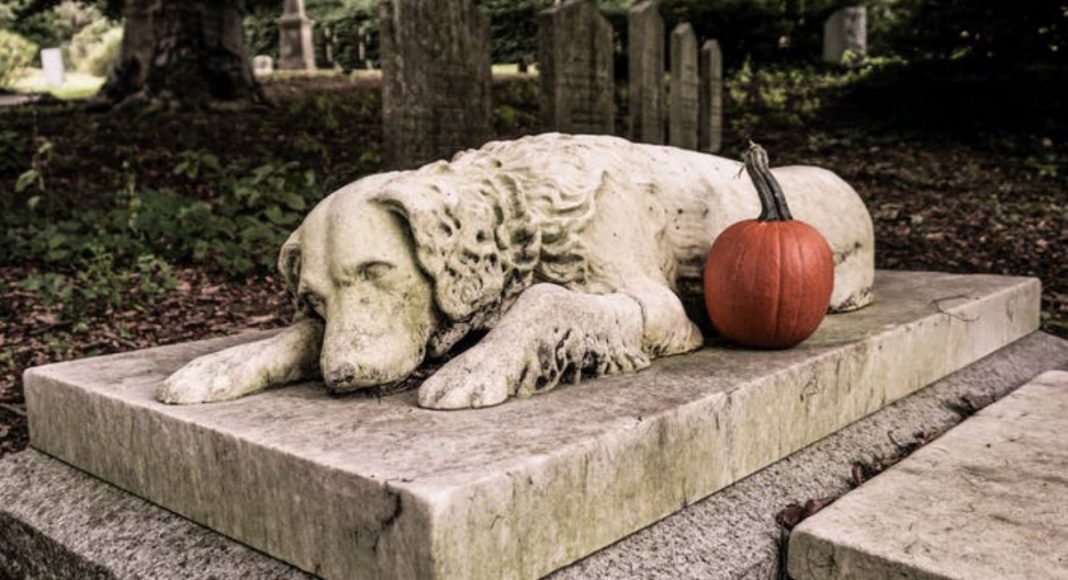Companion animals are part of our families, but inevitably the time comes for us to say goodbye to them due to old age or disease.
Many pet lovers opt to bury their pets in the backyard. However, there are some hidden risks to this, and there are other options that will help other pets, and even the owners who love them.
Donating their body to science, for research and veterinary training, can potentially help hundreds of pets.
Why the backyard isn’t best
Backyard burial may seem like the easiest way to respectfully take care of your pet’s remains. Unfortunately, it can be dangerous for other pets and wildlife. Most pets are put to sleep with an extremely concentrated anaesthetic agent, which results in a very peaceful death (hence the term euthanasia, which means “good death”). However this drug, pentobarbital, persists in the buried body of the pet for up to a year. Any animal scavenging on the remains will be poisoned by the euthanasia solution.
RELATED: This Is Why We Value Dogs More Than Cats
I have seen two cases in my career where this has happened, with serious consequences. In one case a family had their pet mouse put down and buried it in the backyard. The family’s terrier dug up and ate the mouse, and was comatose in intensive care for nearly a week. In another case, two farm dogs scavenged some bones from a cow which had been euthanased on a farm months before. One dog died and the other was seriously ill for several days.
If your pet dies of a disease which could be spread to other animals or even people, their body might also pose a risk. While vaccination has reduced the amount of dangerous pet diseases in the community, some diseases like parvovirus still occur in outbreaks and are very hardy and spread readily between dogs.
This virus causes severe and sometimes fatal gastrointestinal disease in puppies and young dogs. Thankfully there are not many diseases we can catch from our pets, but some – such as salmonellosis and toxoplasmosis – can make sensitive people very ill.
What do to instead
One option is pet crematoriums and cemeteries, which are available in most large cities and regional centres in Australia. The services are very professional and cover a variety of options and price ranges that suit most pet owners. Costs may vary with the size of the pet.
Professional burial or cremation avoids the risks of environmental contamination or disease that might occur with backyard burial. For my own pets which have passed away, I chose cremation which typically costs A$200-300, and then buried their ashes under a memorial tree in my garden.

However, there is another path. As a veterinary pathologist, my job is to conduct autopsies on animals to determine their cause of death. We also use the knowledge and samples we get from the autopsies to conduct research to improve our understanding of diseases and treatments in both animals and people.
RELATED: Talking To Your Dog Or Cat Means You’re Smart, Not Crazy
Our pets make excellent “models” of diseases in both pets and people, allowing scientists to study the development and progression of a disease and develop new treatments.
Cancer is the most common cause of death for pet dogs. Many popular breeds get the same cancer at high rates, providing ample valuable research material. These dog cancers are similar in appearance, behaviour, treatments and genetic causes to many human cancers.
What’s more, because dogs share our home environments, but age faster and show more rapid cancer progression than humans, studying dogs provides faster research results. In the United States, dog cancer trials are already informing trials on new human treatments.
Another area where dogs are valuable scientific allies is in the study of rare genetic and developmental diseases in children. As we have bred dogs for specific appearances, from squishy-faced French bulldogs to lanky greyhounds, we have unwittingly created genetic abnormalities. Some of these are close counterparts of rare genetic disorders in children. Thus, dogs can be used to help identify the genetic mutations behind the disease, and how the faulty gene affects human children.
Universities have rigorous ethical reviews for this type of research. However, it is vital that we have the opportunity to take samples of both common and rare pet diseases to form tissue banks. Most of this sampling happens during an autopsy after the pet has died or been put to sleep. These tissue samples are used to research better treatments.
How to donate
If you are interested in donating your pet’s body, your veterinarian can direct you to potential local options. In most large cities this will be the veterinary school at the local university. Alternatively, you can contact the veterinary science school directly through their website or general enquiries telephone number.
Most schools are interested in all species for teaching. My institution takes everything from mice to horses, and exotic pets like snakes and lizards. All these species provide opportunities to learn about their anatomy and diseases.
Beyond helping us research human diseases, veterinary schools need pet body donors to help teach anatomy, surgery and pathology. At its most ethical this training is done on the bodies of animals that have died from natural causes.
Donated pets provide my students with a valuable understanding of how disease affects the body. Further, we report the autopsy findings back to the pet’s veterinarian. This information is crucial to vets who want to confirm diagnoses, and for giving grieving owners some closure.
If you do opt to bury your euthanased pet, please consider enclosing their remains in a container that would prevent other animals accessing the body. Many local councils also have restrictions on pet burial, and it is worth looking at your local area’s guidelines.
Ultimately though, I would urge you to donate your pet’s body to science. The loss of a pet can be heartbreaking, but there are many ways to create a meaningful legacy from that loss which helps both pets and people.
Rachel Allavena, Associate Professor, The University of Queensland
This article is republished from The Conversation under a Creative Commons license. Read the original article.


